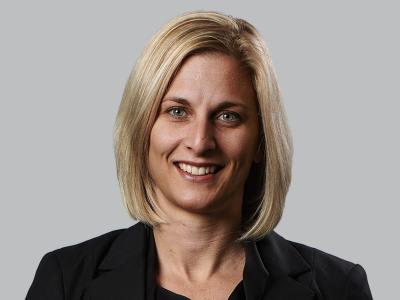Amended start date: Division 296 is now due to commence on 1 July 2026.
Two thresholds: Total superannuation balances above $3m pay 15% - above $10m, it’s 25%.
Controversial measures removed: No more tax on unrealised gains, and thresholds will be indexed.
UPDATE
Revisions to the proposed Division 296 tax legislation
In welcome news, Jim Chalmers has announced the Federal Government has listened to the feedback from industry and is intending to make major changes to the previously announced Division 296 tax on superannuation.
While there may be some devil in the details and some outstanding queries still looming, what we do know is that this is a very positive change that will provide some comfort to those who may have been impacted.
What has been added?
There are now two different thresholds and tax rates that will apply.
Those with a Total Superannuation Balance (TSB) between $3m and $10m will pay an additional 15% tax on a proportion of income AND there is now a 25% tax for those with a TSB exceeding $10m.
The Low-Income Superannuation Tax Offset (LISTO) will be available to more.
The LISTO eligibility cap is lifting to $45,000 and the payment amount is increasing to $810.
What are the key changes?
Tax on unrealised gains is removed
The Government has confirmed that the previous taxing of asset movements will be removed, with tax only to be paid on ‘income’. This is one of the most positive changes to be announced given the significant impact this would have had for many holding assets with fluctuating values
Thresholds will be indexed
Both of the thresholds will be indexed in line with the transfer balance cap (the current pension cap) which will avoid the bracket creep that would have seen significantly more individuals impacted over time
The implementation date will now be 1 July 2026
The delayed start date means trustees and members can make proactive decisions rather than worrying about retrospective laws.
What do we still want to know?
We are still missing some detail on a number of matters, and don’t have actual legislation yet. Key questions include:
- Will the tax be paid on taxable income, or is there a new calculation or adjustment that will occur?
- Will there be any capital gains tax relief on assets that have been held for a long period of time, to ensure members aren’t penalised unfairly for incurring capital growth prior to the introduction of the tax?
While we eagerly await the legislation and look forward to Treasury consulting with the industry, we can all breathe a sigh of relief that the extensive lobbying efforts were a success.
What is Division 296?
What exactly is this tax? Commonly referred to as Division 296, or as the media calls it, the $3m super tax, it originally would apply to ‘earnings’ on superannuation balances exceeding $3m.
With the recent amendments, div 296 will now apply only to realised gains but there are two tax rates and two different thresholds.
Total Superannuation Balance | Tax rate |
Between $3m and $10m | 15% tax |
Exceeding $10m | 25% tax |
Although full details of the amended legislation are not yet available, this is a significant relief to those holding assets with fluctuating values. There will be no tax on unrealised gains and the thresholds will be indexed.
As always, we would like to stress that it is important not to make any rash decisions. There are several key principles to consider before taking any action regarding this tax, including the costs associated with that action and the potential consequences for your superannuation in the long term.
We also want to clarify that the tax applies per member, not per fund. If you have a self-managed super fund with a balance of $3m but multiple members, you may not be affected by this tax. Each individual must have a balance exceeding $3m for the tax to apply.

Taxing unrealised gains
One of the most controversial aspects of the original legislation was the taxing of unrealised gains. The tax would apply to earnings that are calculated based on changes in the value of assets held in your super. People over the $3m threshold would thus pay tax based on the value of investments that haven’t been sold.
What does it mean to tax unrealised gains?
A tax on unrealised gains is a tax on the movements in market values of investments and assets, not just on income generated, but on these value fluctuations that may occur. As an example, if the share market goes up, that would be included as an unrealised gain. When the share market drops down that is an unrealised loss. So we were looking at a tax regime that considered unrealised gains to be a particular type of earnings.
Frequently asked questions about Division 296
At this stage it is due to commence on 1 July 2026. Now, the commencement date is not the same as the due date. It means member balances will be reviewed from that date forward when calculating tax payments.
The first tax bills will be issued after the 2027 tax return is lodged, meaning that people will likely start paying this tax in the 2027-2028 financial year.
Your TSB represents the value of all your superannuation accounts, including any pensions, accumulation accounts, defined benefits, and even old super accounts that you may have left in retail funds. All these balances are combined to give you your TSB.
The relevant tax applies if your TSB exceeds $3m or $10m as of June 30 each year, and this is checked annually. You can move in and out of this system as your balance changes. The first test date to determine your status in the system is June 30, 2027. Just because you’re below $3m or below $10m on July 1, 2027, doesn’t mean your asset values can’t increase, which might push you over the threshold by June 30, 2027.
If your TSB is below $3m at 30 June, you are not liable for Division 296 tax, regardless of your balance at the start of the year or any earnings during the year.
Understanding whether you will be impacted by this tax is crucial, so make sure to stay informed about your TSB.
The answer to this will depend on your individual circumstances.
You do need to consider the implications carefully before taking assets out of super and placing them into another entity.
Also consider the cost of moving assets.
Many people immediately respond with the idea of withdrawing their assets from super to bring their balance below the threshold, so they don't have to worry about paying the tax. Before you jump to that, you need to evaluate the costs of extracting those assets from super.
Assuming you are eligible to withdraw assets from your superannuation—meaning you're over 65 or retired—you may not incur tax on the withdrawal itself. However, any transfer of assets is still subject to capital gains tax (CGT) within the superannuation fund. This means you will trigger a significant upfront cost when transferring assets out, along with potential transfer duties if the assets include property.
One aspect we've begun to model is the upfront costs associated with asset transfers and how many years you've held those assets in super. This analysis can help determine how long it takes to recover the upfront costs incurred during the transfer process.
Example:
Let us use an example of a superannuation fund with a total balance of $5.5m . This includes a property valued at $3m, which has a cost base of $1.2m. This means the property was purchased for $1.2m . It is now worth $3m, so if we choose to transfer this asset out of the superannuation fund, the market value of $3m will be considered our sale price – even though we’re only transferring the asset, not actually selling, the market value gets treated as a sale price, which means we have a capital gain.
In this particular case, the member has a pension balance that started last year and is currently worth $2m . The remaining $3.5m of their super is in their accumulation balance. This distinction is important because the assets supporting the pension are not subject to income tax, whereas the amounts in the accumulation balance will incur income tax. As a result, not all of the super fund is tax-free, meaning the accumulation part of the super fund will pay income tax on any capital gains.
The individual in question says, "I don’t want to remain in this tax regime. I believe the property will increase in value in the future, and I would prefer to transfer it out." Consequently, they decide to transfer the $3m property to themselves. This action leaves them with a remaining balance of $2.5m and allows them to fall outside of Division 296 tax regulations. But what was the cost of this transfer?
We have omitted transfer duty or stamp duty from this example because it does vary from state to state. Just keep that in mind, if you are in a state with a duty regime that there will be additional costs for transfer duty or stamp duty to consider, on top of the example below.
Capital Gains; $3m - $1.2m = $1.8m
Tax on gain: $1.8m - $600,000 (1/3 discount) = $1.2m x 15% = $180,000
However, the $2m sitting in the pension balance incurs no tax. So, as 36% of the super fund is tax-free, we can only tax the remaining 64% of the fund. 64% of $180,000 is $115,200. So it would cost $115,200 to transfer that asset out of our super.
So now we have to consider whether this restructure is saving money. Or rather, how long would it take to recoup the cost of transferring the asset?
It is important to remember that we would have to pay this tax liability as an upfront cost when we move the asset. The ongoing tax liability may only amount to $10,000 per year – meaning it would be 15 years before we started to save money on tax. You must consider if the upfront cost is something you’re willing to bear vs. a much smaller tax bill spread over many years. It is a big decision.
Something to consider is if the asset is outside of super what do you do with it? Are you planning to sell it or pass it to the next generation? These are the things that need to be considered because holding it outside of super may give you a very big capital gains tax bill in 15 years time.
There are a lot of variables to consider here, and many of them are based on projections for what will happen in the future.
What is the best vehicle for you to have these assets in – trust, company, or personal? It could be you want to use these assets as part of an intergenerational wealth transfer. This opens a whole new conversation around the tax implications outside of super as well.
As you can see, there's no simple answer as to what should you do. Your instinctual response might be to cash it out of super – but there's actually some other things that need to be factored in as well before you make that decision. This needs to be carefully considered based on your specific circumstances.
One question we are constantly asked is what are the key dates to be aware of? At this stage, the legislation will apply from 1 July 2026, but the first key testing date is 30 June 2027. It is important to consider your specific issues before this date.
If you have any concerns about this tax, please do reach out to us. We are more than happy to talk to you and to address your specific concerns.
There have been a few instances where it has been perceived that farmers are being used as a manipulative focal point to protect the interests of the vast majority of large balance holders that are likely to be impacted but are not in professions that will elicit an emotional response from the public at large. Many SMSFs hold assets such as farmland or commercial property where that asset is being used in an arm-length lease arrangement with a business that supports the owners livelihood. This means that small business owners and farmers are being impacted where they are unable to sell a portion of the main asset held by their super fund.
There is little strategic opportunity to adapt to the changing of laws, rather they just need to pay the extra tax. Compare this with a fund in a portfolio of shares or a retail super fund then it is quite different and allows for more strategic ways to deal with the new rules.
This is a personal tax so people will more likely need to source funds to pay the tax outside of super where liquidity in the fund doesn’t support it. This means that people need to start preparing to ensure they have enough liquid assets personally, could be Cash or Shares, to ensure they can meet future liabilities. In times where cost of living pressures have been impacting households, it may not be a simple task to come up with money at short notice to fund an extra tax bill.
Diversification and liquidity rules are the same no matter the asset an SMSF holds. The trustee needs to be aware and meet their requirements for meeting costs and having to ability to make payments when required. Having a farm is no different, ensuring that the lease income is enough to meet ongoing costs and payments. If this cannot be met then they would need to plan to potentially liquidate the fund.
For this reason, we often speak with clients about building up additional investments to farmland in the super fund where possible. This will provide some diversification and ability to meet short term liquidity requirements.
Short history of the div 296 tax legislation
This matter has been ongoing for quite some time. It was first announced in February 2023 and presented as a brief document that stated a new tax would apply to ‘earnings’ on superannuation balances exceeding $3m.
The legislation was drafted and successfully passed through the House of Representatives after some discussion. It was then sent for Senate review, where it was received without any issues; the Senators deemed the tax fair and had no concerns about the draft. However, the legislation became stalled in the Senate for quite a while.
The delay was due to a couple of main concerns that many of us share: the tax is based on unrealised gains, and the threshold is not indexed to inflation. During the last few sessions of Parliament, there were attempts to push the legislation through, but it did not succeed. Eventually, when the election was called, the legislation lapsed.
After unexpected election results, the legislation resurfaced with renewed momentum.
The government did confirm on multiple occasions that they intended to proceed with the legislation without amendment. Treasurer Jim Chalmers stated that this is not new; the legislation has been available for everyone to review, and they are very clear about their plans to move forward. They do not intend to delay the previously announced start date of July 1, 2025.
However, in a media release on 13 October, 2025, Treasurer Chalmers announced major changes to the legislation.
FOR MORE INFORMATION
If you would like to learn more about the topics discussed in this article, please get in touch:








